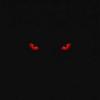
The idea of a witch's familiar spirit, embodied in some kind of animal, arose from the ancient concept of the personal demon in animal form. Sometimes this was imagined as a guardian or tutelary spirit, like the totem animals of the American Indians. Sometimes it it was viewed as an animal incarnation of a part of one's own soul, like the ba of the Egyptians. Just as a loved person could be considered a kindred soul, so a beloved pet might also seem soul-connected. (taken from, The Womans Dictionary of Symbols and Sacred Objects.

Familiars
By Deva Bluewing
Click
Non-Pagan history describes familiars as low-ranking demons in constant attention to Witches for the purpose of carrying out spells and bewitchments. Familiars usually assumed animal forms - cats, toads, owls, mice and dogs seem to have been the most common - though virtually any animal or insect could be suspected. In the Witchcraft Trials, if so much as a fly buzzed in the window while someone suspected of being a witch was being questioned or tried, it was said to be her (or his) familiar. The inquisitors took the Bile to heart: those who had familiars were "an abomination unto the Lord" and should be "Put to death: they shall stone them with stones: Their blood shall be upon them" (Lev. 20:27).

Familiars - also called imps - were said to be given to Witches by the Devil or bought or inherited from other Witches. A Witch could have several of them. Cats were the favored forms, especially black ones. The fear that all cats were Witches' familiars was one of the primary reasons for the famous cat massacres that swept through medieval Europe.
Familiars were given names like any household pet, which most of them undoubtedly were. Perhaps the best known familiar name is Pyewackett, the monicker the Witch's cat in the movie Bell, Book and Candle, and a name that dates back to Renaissance England. Pyewackett, Matthew Hopkins (the famous Witch hunter) stated, was a name "no mortal could invent."
During the Witch hysteria of the Middle Ages and Renaissance, the obsession with familiars was confined mostly to England and Scotland, where they are mentioned in numerous trial records, especially those related to Hopkins. The Witchcraft Act of 1604 made it a felony to "consult, convenant with, entertain, employ, feed, or reward any evil and wicked spirit to or for any intent or purpose." But the Malleus Maleficarum (1486), the major Witch inquisitor's handbook, offers no instructions concerning familiars in the interrogation and trial of Witches. The book does acknowledge that an animal familiar "always works with the Witch in everything."
There is a scant evidence of familiars in early American Witch trials. In the Salem Trials in 1692, John Bradsheet was indicted for "inciting a dog to afflict." The dog was tried and hanged as a Witch.

Outside of Witch trials, more benevolent familiars were believed to exist, serving wizards and wise men (and women) who were magicians or village healers. The familiars helped diagnose illnesses and the sources of bewitchment and were used for divining and finding lost objects and treasures. Magicians conjured them in rituals, then locked then in bottles, rings and stones. They sometimes sold them as charms, claiming the spirits would ensure success in gambling, love, business or whatever the customer wanted. This sort of familiar was technically not illegal; England's Witchcraft Act of 1604 prohibited only evil and wicked spirits. Some familiars were said to be Faeries. Oberon was a popular name for fairy familiars in 15th and 16th century England.
Many modern Witches have animal familiars, usually cats, which are their magical helpers. Some also have dogs, birds, snakes or toads. Witches do not believe the familiars are "demons" or spirits in animal form but simply animals whose psychic attunement makes them ideal partners in magical workings. Some Witches say that it is possible to endow pets with magical powers and turn them into familiars, though others don't believe it should be done. Still others believe familiars are never "pets" (and should never be treated as such) but are animals who volunteer to work as familiars and are Karmically attracted to Witches. Witches who do not have familiars send out psychic "calls" to draw the right animal.
Familiars reputedly are sensitive to psychic vibrations and power and are welcomed partners inside the magic circle and other magical work. They also serve as psychic radar, reacting visibly to the presence of any negative or evil energy, whether it be an unseen force or a person who dabbles in the wrong kind of magic. Familiars are also given psychic protection by their Witches. Some Witches it seems also use the term familiar to describe thought-forms created magically and empowered to carry out a certain task on the astral plane.

Sorcerers and shamans in cultures around the world also have helpers in the form of spirits. Dispatching them on errands to heal, harm or kill - called sending. The physical shape of a familiar varies. New Guinea sorcerers rely on snakes and crocodiles, while in Malaya, the familiar is usually an owl or badger passed down from generation to generation.
Throughout Africa, the wild creatures of the bush are said to be Witches' familiars: for the Lugbara, they are said to be the toad, snake, lizard, water frog, bat, owl, leopard, jackal and a type of monkey that screeches in the night; for the Dinka, they are black cobras and hyenas. The Zulus' familiars are said to be corpses dug up and re-animated with magic; they are sent out at on night errands to scare travelers with their shrieking and pranks. In Shamanism, a novice shaman acquires his familiar spirits, usually manifesting in animal, reptile or bird shapes, when he completes his initiation. He or she may send them out to do battle in his or her place, but if they die, so does the shaman. Familiars usually stay with their shaman until death, then disappear. Among certain Eskimos, the familiar is embodied in an artificial seal, not a live animal.
In closing, what I usually instruct in this area is that the student of magic who feels that they have found a familiar is that they should practice an exercise called "Trading Places" by Keith Harry. This exercise is simple enough to memorize and to practice, and though it was not written specifically for bonding with an animal familiar it was designed for becoming familiar with an animal, and inducing a mystical experience. I think you will readily discern its value in the acquiring of a familiar.

This page was researched and created by JuliahDarq
NEW MEMBERS
Exasperater (20)
00:12 - April 04 2025

Sycophant (6)
11:38 - April 02 2025

Leech (2)
11:46 - April 01 2025
REAL VAMPIRES LOVE VAMPIRE RAVE
Vampire Rave is a member of
Page generated in 0.0402 seconds.







